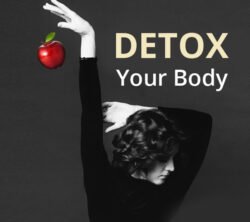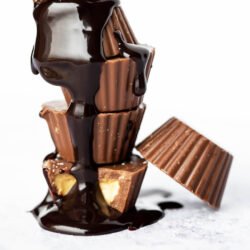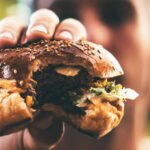A Natural Approach To Diabetes – Type 1 & 2
7% of the American population has diabetes, and almost a third of those individuals are unaware of the fact that they have it.
Type 1 vs. Type 2
Type 2 is the most common form of diabetes.
If you have type 2 diabetes, either your body isn’t producing enough insulin, or the cells of your body are ignoring the insulin that you are producing.
Insulin is necessary for the body to use sugar in the bloodstream, transport it into the cells, and use it as energy. If this process is disrupted, then sugar can build up in the blood and cause various problems. The two main issues being:
- Cells become starved of energy; individuals suffer from fatigue
- Overtime high blood-glucose levels can permanently damage tissues such as the eyes, liver or heart
5th deadliest disease in the US with most health care professionals being taught that there is no care, but I know this not to be true.
Type 1 is the less common and more dangerous form of diabetes.
If you have type 1 diabetes, your body is not producing any insulin.
Receiving a type 1 diabetes diagnosis can be scary. It has strong associations with increased risk of heart disease and blindness, nerve damage, or kidney failure.
But please don’t panic – you can live a long, healthy, and happy life.
Diabetes is the 5th deadliest disease in the US, and most healthcare professionals have been taught that there is no cure.
I know this to be untrue.
How do we become diabetic?
To best understand how you can recover from diabetes, it is important to understand the processes that lead people to become diabetic.
For optimum health, we want to maintain normalized blood sugar. But most of us, and most of our children, aren’t starting the day correctly. Toast, pancakes, cereals, or even a pop-tart – all these foods are simple carbohydrates, sugars, and starches that cause our blood sugar to skyrocket.
The body responds to this sugar spike by producing a ton of insulin. The cells are working overtime to grab all the sugar as fast as they can to get it out of the blood. Unfortunately, the pancreas won’t slow this process down until our blood sugar is plummeting, hard.
Rock bottom blood sugar causes that seemingly insatiable hunger, coupled with an irritability that borders on pure rage.
All too familiar, right?
So we run into the kitchen and grab the first bit of food we see, which is likely to be a simple carbohydrate like bread, or crisps, or a cookie.
The process starts again, and we go round and round and round.
Fast forward several years, and your pancreas has given up. Either the pancreas is no longer producing insulin, or if it is your body is ignoring it.
This is how we become diabetic.
How do we fix things?
To recover from any diabetes, you need tight control over sugar levels. Give your pancreas a nice, long vacation.
You must feed the body for rapid healing and tissue repair. Recovery can take years, depending on the severity of diabetes and how long people have had diabetes. But, I have seen it happen.
The Magic Couple
So you can recover from diabetes, two nutrients are necessary.
Fibre and Protein.
These two nutrients are genuinely magical. For every 1g of fiber you take in, you erase 1g of sugar. And, for every 7g of protein you take in, you erase 9g of sugar.
So, your entire diet should be based around fiber, protein, produce, and supplementation.
You want to eat fiber and protein that is easy to digest; that way, your body is better able to absorb the nutrients from the food. Here’s a list of fiber and protein sources in order of digestibility.
Protein
- Legumes
- Wholegrains
- Nuts
- Sprouts
- Soy
- Fish
- Eggs
- Poultry
- Dairy foods
- Lamb
- Pork
- Red meats
Fibers
- Veggies
- Fruit
- Wholegrain
- Bran
- Nuts
- Seeds
- Legumes
These foods will decrease inflammation, promote healing, and soothe any pain you might have associated with your diabetes.
In addition, you should be taking in complex carbs such as fruit (in small amounts), whole grains, nuts, seeds, and green leafy vegetables and herbs.
I also recommend supplementation. To find out more about specific products that I recommend, listen to my talk’ Diabetes, Type 1, and Type 2′.
What next?
Whatever type of diabetes you are dealing with, you need to be informed. Educate yourself. Keep up to date with the latest research.
- Book a free, fifteen-minute consultation to discuss your concerns and see how we might be able to help you achieve your health care goals.
- Check out the following Dr Sandy audio downloads:
-
 DETOX – Your Body: eCourse$75.00Add to WishlistAdd to Wishlist
DETOX – Your Body: eCourse$75.00Add to WishlistAdd to Wishlist -
 Sweet Sweet Freedom!$29.99Add to WishlistAdd to Wishlist
Sweet Sweet Freedom!$29.99Add to WishlistAdd to Wishlist -
 Power of Soy$14.99Add to WishlistAdd to Wishlist
Power of Soy$14.99Add to WishlistAdd to Wishlist




